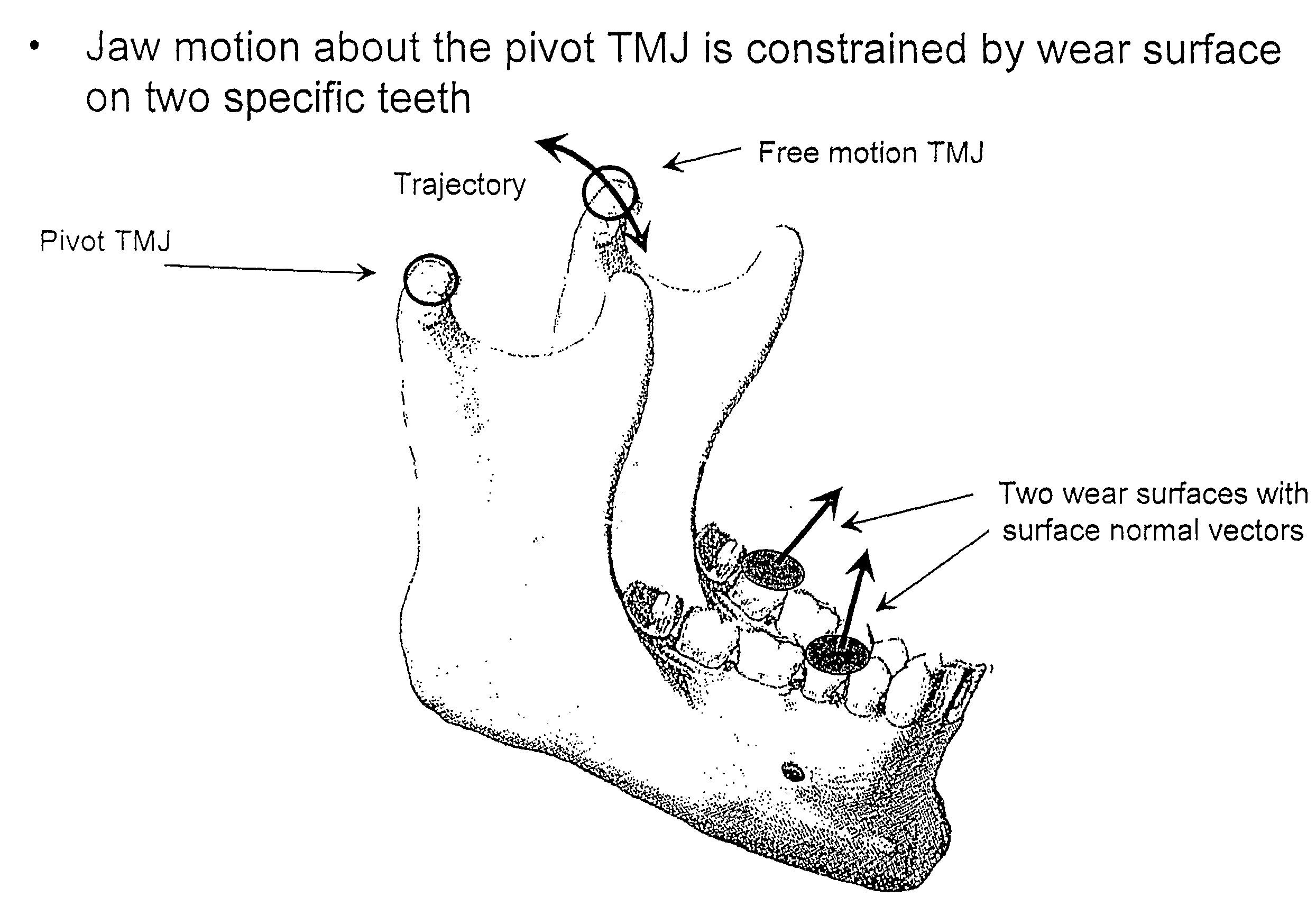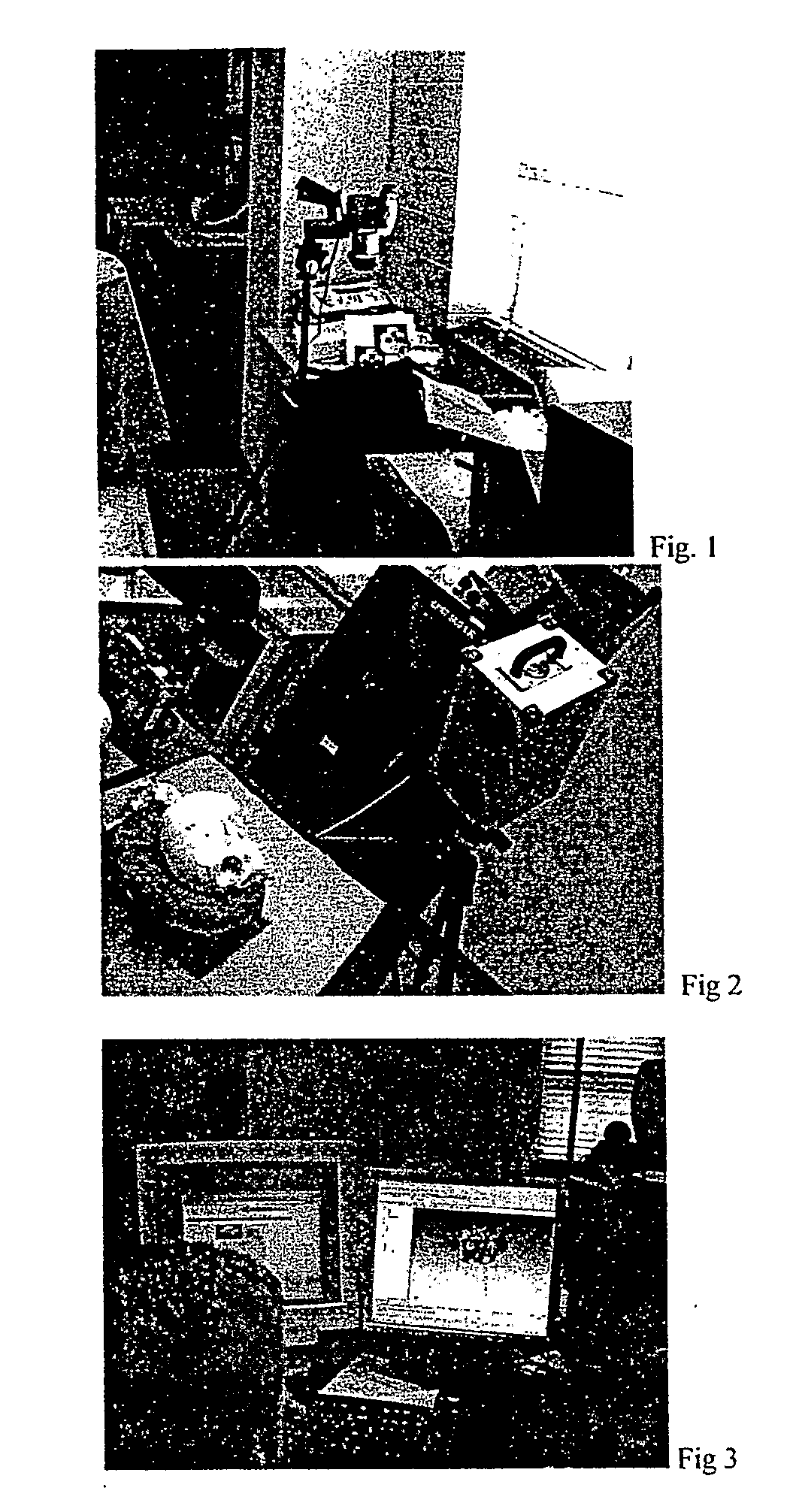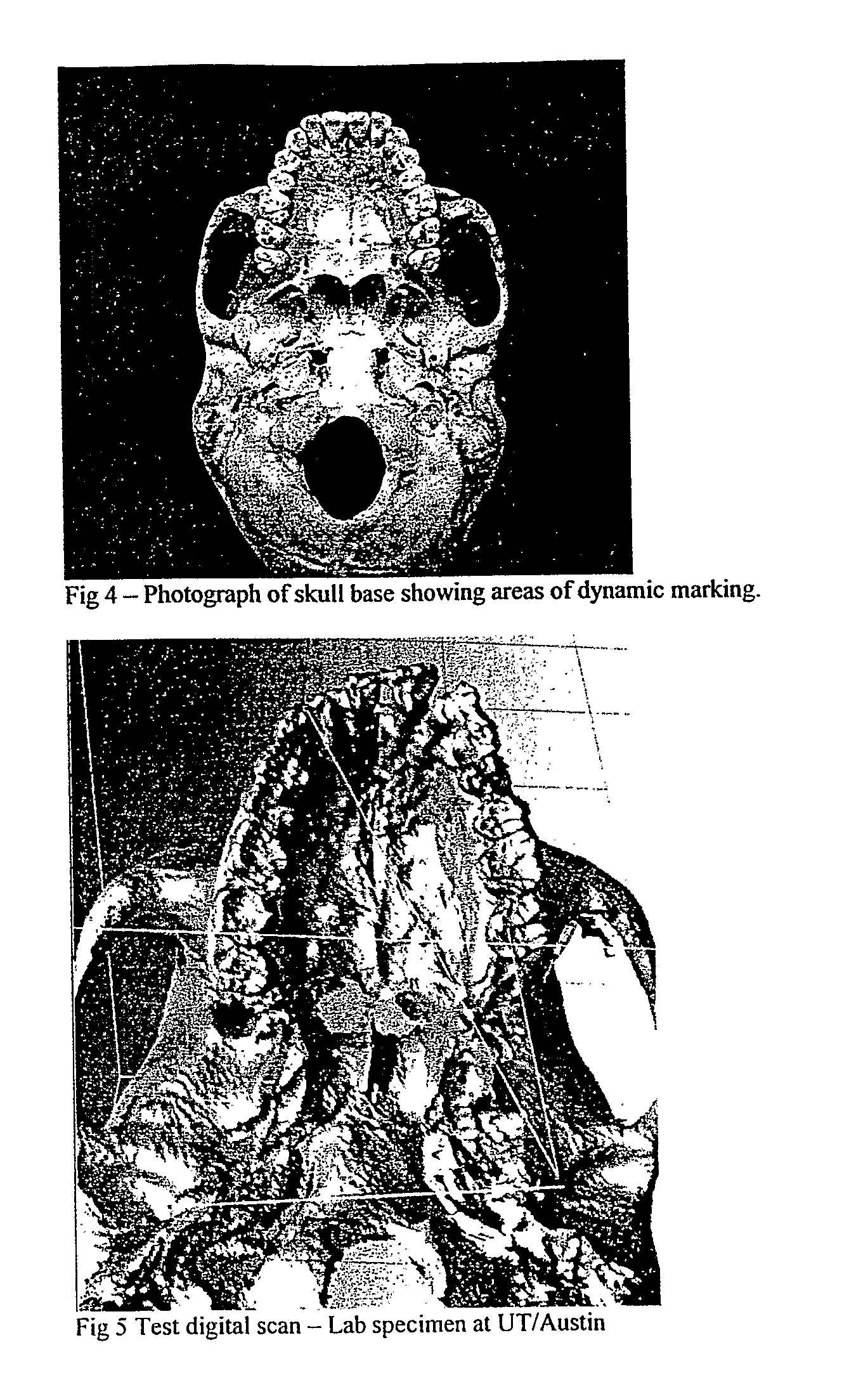Method and system for morphometric analysis of human dental occlusal function and uses thereof
a morphometric analysis technology, applied in the field of morphometric analysis of human dental occlusal function, can solve the problems of insufficient direct measurement and/or analog model to provide necessary mathematical formula, ineffective techniques, and inability to accurately analyze human skulls, etc., to achieve the effect of improving teeth alignmen
- Summary
- Abstract
- Description
- Claims
- Application Information
AI Technical Summary
Benefits of technology
Problems solved by technology
Method used
Image
Examples
Embodiment Construction
[0043] The inventors have found that a mathematical model can be constructed from wear patterns on at least two teeth on opposite side of the jaw to determine and understand temporomandibular joint (TMJ) motion. The determination and understanding of TMJ motion allows the inventors to construct improved dental prostheses such as artificial TMJs, improved caps and / or replacement teeth, or the like and to design improved teeth alignment for orthodontic configurations and improved tooth augmentation to improve or change TMJ dynamics.
[0044] The present invention broadly relates to a predictive mathematical formula based on morphometric analysis, analog and / or digital, of a TMJ and teeth of an animal including a human, where the mathematical formula is capable of describing or predicting complex TMJ motion patterns as evidenced by tooth wear and / or jaw wear. Data derived from the formula can then be used to construct remedial appliances or prostheses for the head and neck, and for denta...
PUM
 Login to View More
Login to View More Abstract
Description
Claims
Application Information
 Login to View More
Login to View More - R&D
- Intellectual Property
- Life Sciences
- Materials
- Tech Scout
- Unparalleled Data Quality
- Higher Quality Content
- 60% Fewer Hallucinations
Browse by: Latest US Patents, China's latest patents, Technical Efficacy Thesaurus, Application Domain, Technology Topic, Popular Technical Reports.
© 2025 PatSnap. All rights reserved.Legal|Privacy policy|Modern Slavery Act Transparency Statement|Sitemap|About US| Contact US: help@patsnap.com



